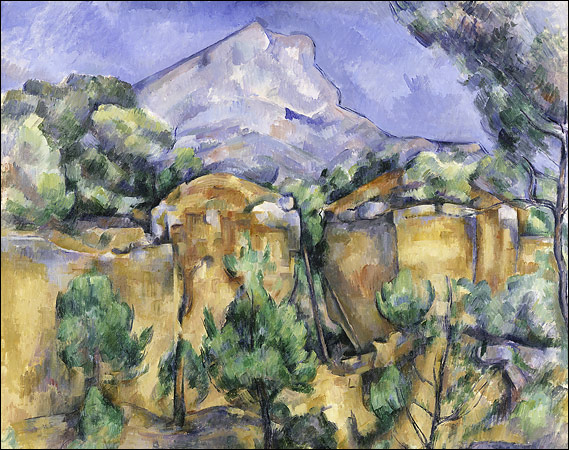27 January 2006
Cézanne in Provence
The art Cézanne made in Provence, especially his last convulsive images of Mont Sainte-Victoire, ultimately shook painting to its core. It effectively destabilized centuries of representation to reach a deeper, fuller, nearly hallucinatory kind of realism. In the early 1900's, when Cézanne's paintings began to be known to younger artists like Braque, Picasso, Matisse and Mondrian, these works provided the foundations for Cubism and the multiple strands of early Modernism.
So writes critic Roberta Smith in the New York Times in her exceptionally cogent review of the exhibition "Cézanne in Provence" opening January 29 at the National Gallery of Art.
It was the landscape of Provence, more than anything else, that pushed Cézanne to make his particular changes. It prodded him to unhinge painting from conventional representation, to create breathing space between his brushstrokes and what they described. The proof is in the making. He brought a new equilibrium to painting's essential trifecta — the act of seeing, the psychic and physical process of painting, and the finished work — that gives the medium its novelistic richness and, even now, its firm grip on the imagination.
It is interesting to consider that although many of the artists that were affected by Cézanne's painting at the beginning of the twentieth century were political radicals who desired to overthrow the established institutions of Church and State and wanted a "modern" art that, in its rupture with the past, would express this radical agenda, Cézanne was conservative in his beliefs and a devout Catholic. Although it also happens, as his dealer Amrbroise Vollard tells us, that when the light was good for painting on Sundays "the curate had to get along without Cézanne."
I hope that everyone will make the effort to get to the exhibition. It should be more than worth it.
While you're there, be sure not to miss the exhibition of sculptures on tour from the Orasanmichele by Ghiberti, Nano di Banco and Verrochio, a rare opportunity to see monumental Florentine sculpture in the U.S.
Subscribe to:
Post Comments (Atom)





No comments:
Post a Comment